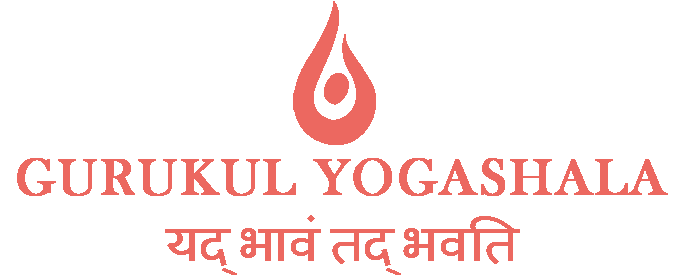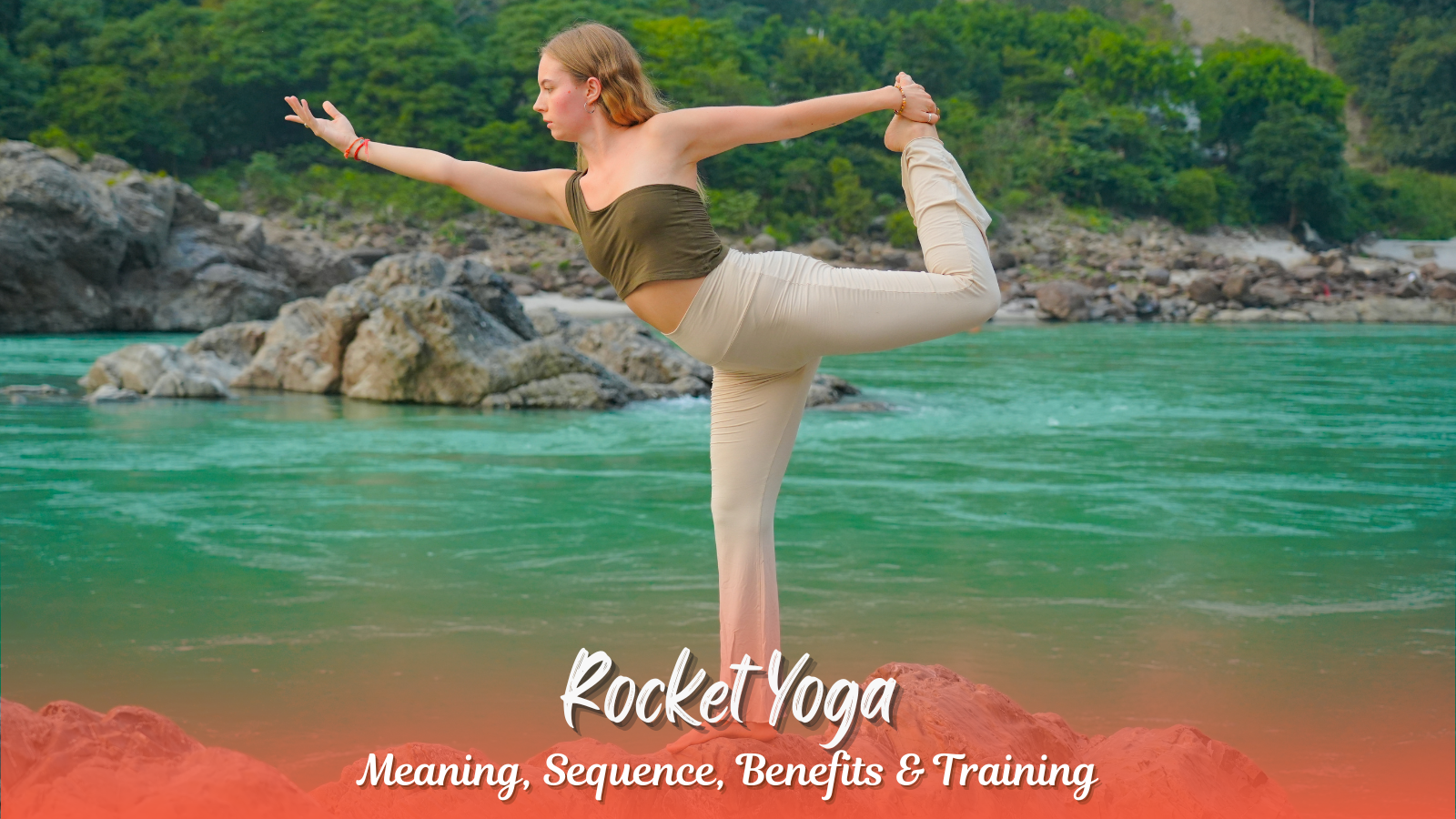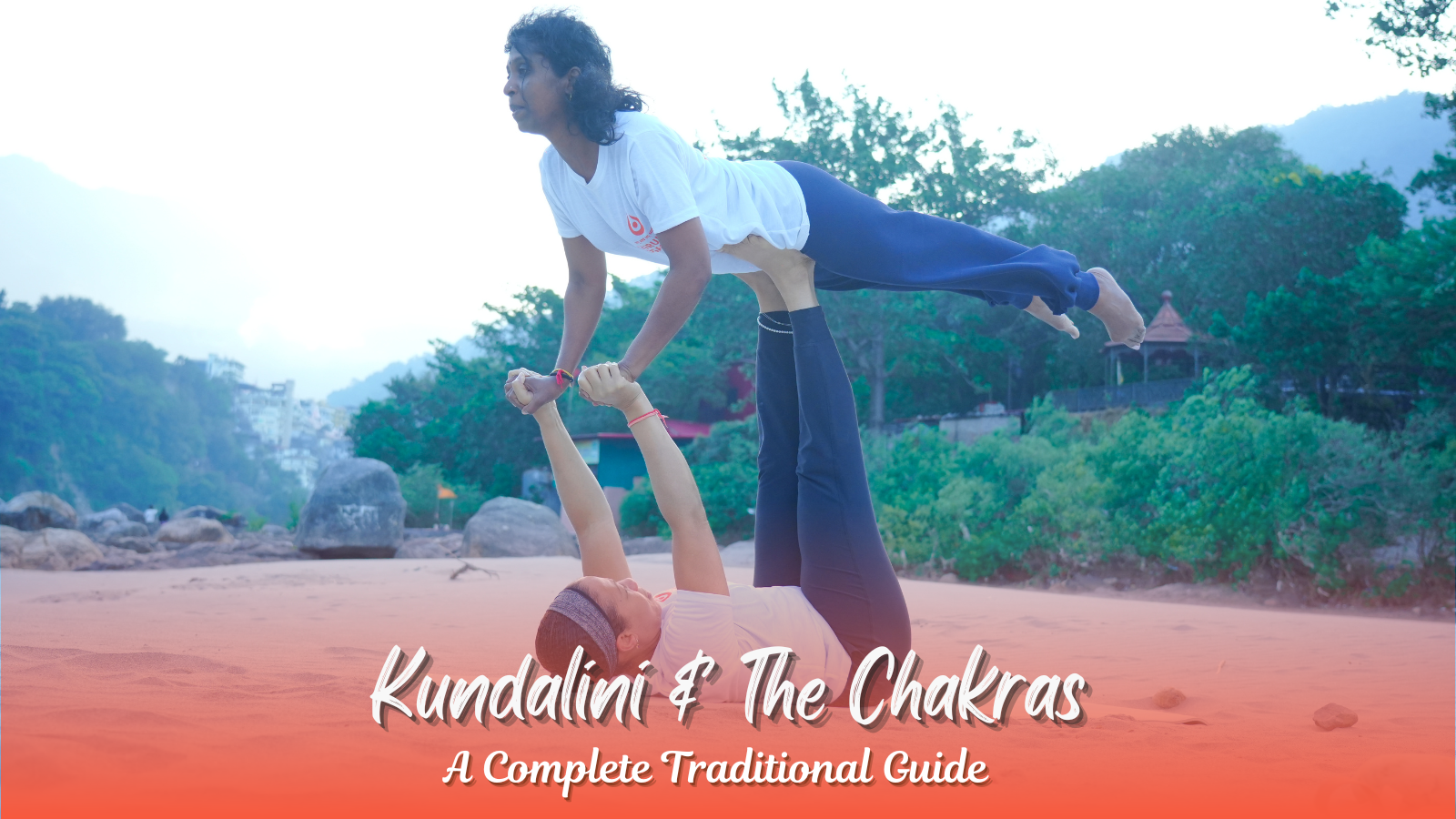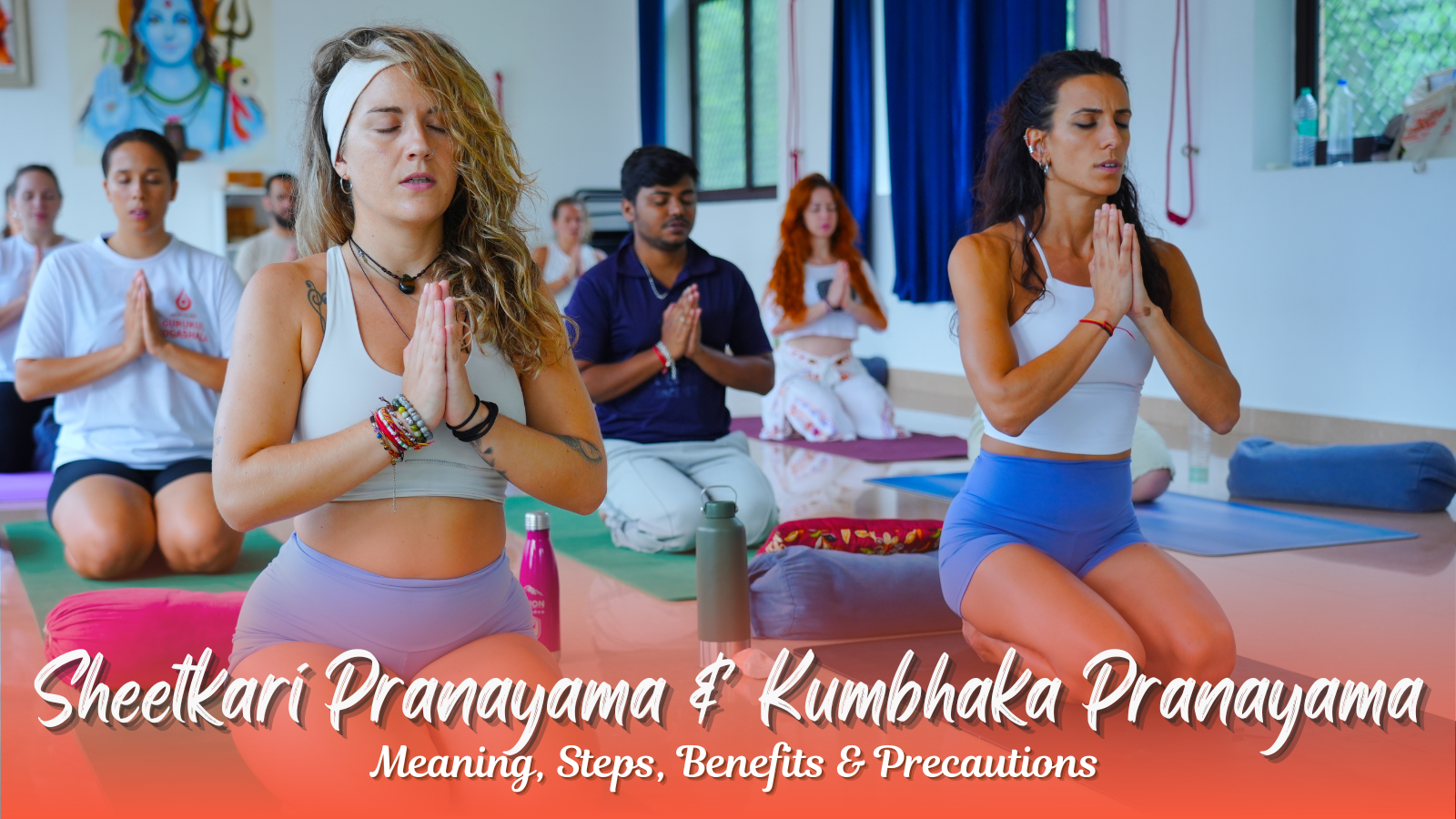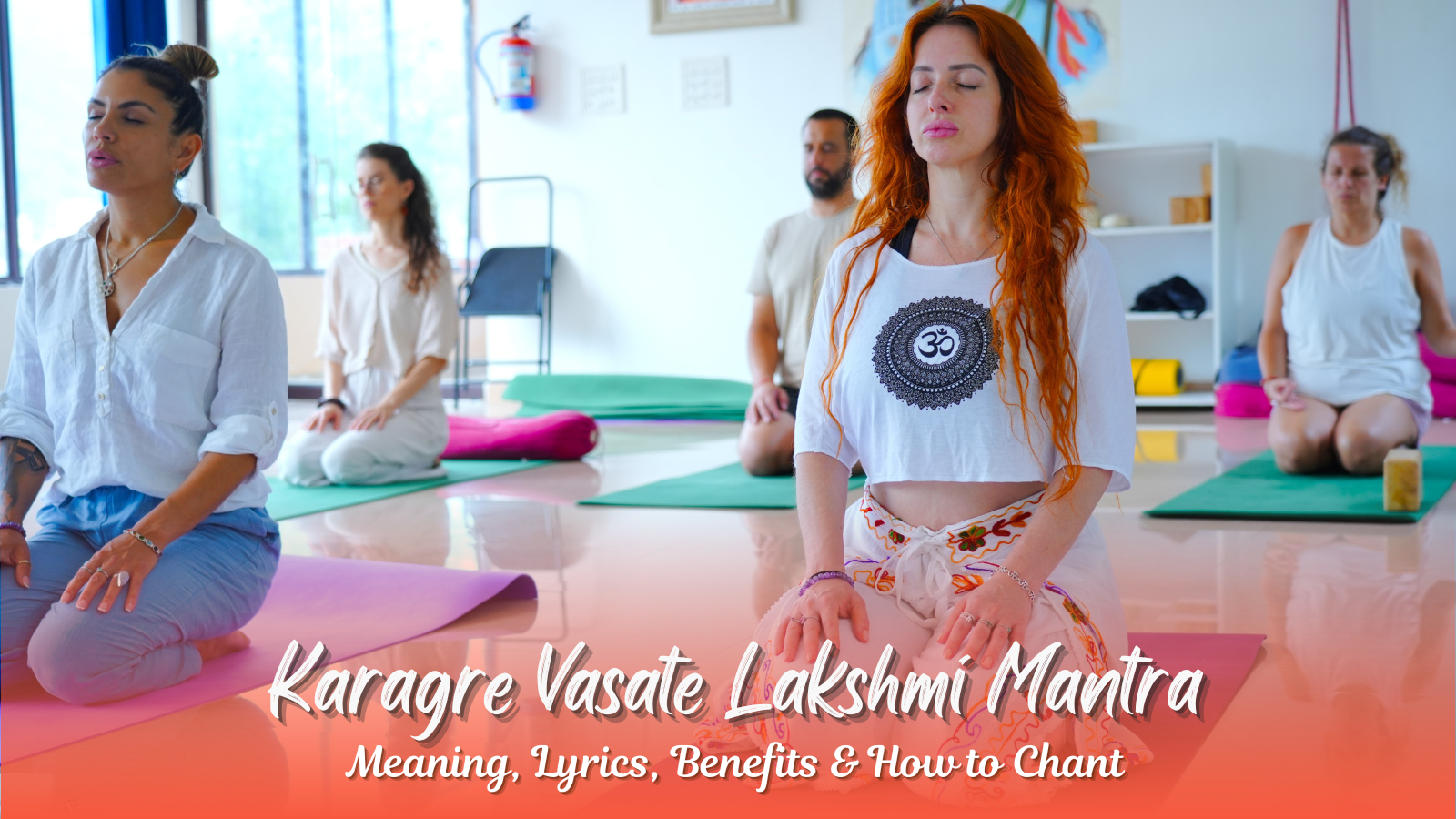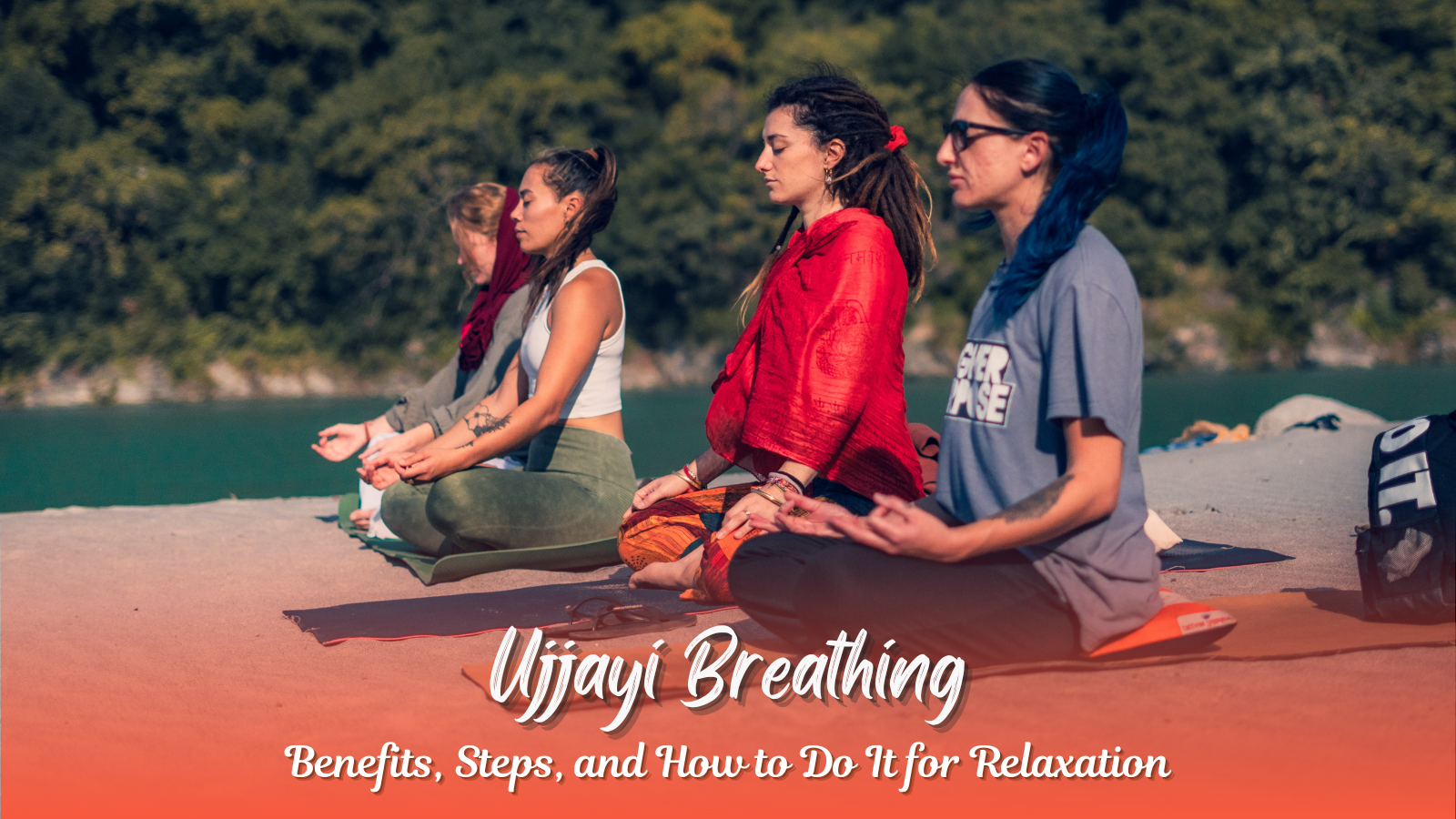Breath is the most vital force in yogic philosophy. The quality of your breath directly influences your physical health, emotional balance, and mental clarity. Among the many pranayama techniques practiced in traditional Hatha Yoga, Dirgha Pranayama, also known as Three-Part Breath, is one of the foundational and most transformative techniques.
At Gurukul Yogashala, a traditional yoga school in rishikesh, Dirgha Pranayama is taught with precision, anatomical awareness, and spiritual depth during all levels of yoga teacher training in rishikesh, including the globally recognized 200 hour yoga teacher training in Rishikesh.
This complete guide explores:
- What is Dirgha Pranayama
- How to do Dirgha Pranayama (step-by-step)
- Dirgha Pranayama benefits
- Contraindications
- Difference between Dirgha Pranayama and Ujjayi Pranayama
- Advanced tips from yoga experts
- Scientific & spiritual perspective
Let’s dive deeper.
What Is Dirgha Pranayama? (Meaning & Yogic Background)
Dirgha Pranayama comes from the Sanskrit words:
- “Dirgha” — long, deep, complete
- “Pranayama” — breath expansion, regulation of life force
Thus, Dirgha Pranayama means “the practice of long, complete, and controlled breathing.”
It involves consciously expanding the breath into three parts:
- Belly / Diaphragm
- Ribs / Thoracic Region
- Chest / Clavicular Region
This makes Dirgha Pranayama a full-lung breath, enhancing both oxygen absorption and energy flow (Prana Vayu).
Traditionally, Dirgha Pranayama is practiced:
- at the beginning of yoga sessions
- before meditation
- during stress
- for grounding emotional turbulence
- to correct dysfunctional breathing patterns
The Science Behind Dirgha Pranayama (Physiological Explanation)
Most people breathe using only the upper chest, which restricts oxygen intake and puts the body into a state of subtle stress. Dirgha Pranayama reverses this dysfunctional breathing pattern by training the diaphragm—the body’s primary breathing muscle—to work efficiently.
When you practice Dirgha Pranayama:
- The diaphragm moves downward properly
This creates more space in the lungs, allowing maximum oxygen absorption.
- The vagus nerve activates
This nerve triggers the parasympathetic nervous system, immediately creating a sense of relaxation.
- Heart rate and blood pressure reduce naturally
Deep breathing improves cardiovascular function without strain.
- Lymphatic detoxification improves
Breath-driven diaphragmatic movement supports the lymphatic system, helping flush toxins from the body.
- Brain receives more oxygen
This improves concentration, clarity, decision-making, and memory.
This scientific foundation is why Dirgha Pranayama is often prescribed for people with stress-related health conditions, anxiety, high blood pressure, digestive problems, and emotional imbalance.
Dirgha Pranayama & Emotional Healing
In yogic philosophy, emotions are stored in the body—particularly in the solar plexus (Nabhi), chest (heart center), and throat.
The three-part breath gently massages these regions, helping dissolve emotional blockages.
How it supports emotional wellness:
- Belly breathing relaxes survival-based fears and anxiety
- Rib expansion releases tension from suppressed emotions
- Chest breathing opens the heart space, promoting compassion
- Slow exhalation clears emotional heaviness
This is why Dirgha Pranayama is often used in:
- Trauma-sensitive yoga
- Meditation for emotional healing
- Yoga nidra
- Inner child therapy
- Stress management programs
At Gurukul Yogashala, teachers guide students with compassion, grounding, and ancient yogic wisdom to help release emotional holding patterns.
Dirgha Pranayama & Meditation (Why It Strengthens Mindfulness)
Before meditation, the mind is usually restless due to irregular breathing. Dirgha Pranayama anchors the mind by stabilizing the breath.
Benefits for meditation practitioners:
- Increases mental stillness
- Reduces internal chatter
- Improves awareness of the present moment
- Helps hold longer meditation sessions
- Makes transitions from asana to meditation smoother
This is why many meditation teachers recommend practicing Dirgha Pranayama for 3–5 minutes before beginning meditation.
Dirgha Pranayama in Yoga Philosophy
Traditional scriptures like the Hatha Yoga Pradipika and Gheranda Samhita emphasize the importance of long, controlled breathing. According to yogic wisdom:
“The breath is the bridge between the mind and the body.”
Dirgha Pranayama embodies this philosophy by teaching practitioners to breathe consciously from the lower, middle, and upper regions of the body.
According to ancient teachings:
- Belly breath activates Apana Vayu (elimination energy)
- Rib breath activates Samana Vayu (digestive & balancing energy)
- Chest breath activates Prana Vayu (upward-moving life force)
Practicing Dirgha Pranayama harmonizes these pranic energies, creating balance and steadiness.
How to Do Dirgha Pranayama (Step-by-Step Instructions)
Here is a simple and effective method taught at Gurukul Yogashala:
Step 1: Sit in a comfortable position
Choose Sukhasana, Vajrasana, or sit on a cushion. Keep spine lengthened.
Step 2: Relax your shoulders
Let the chest soften and jaw loosen.
Step 3: Place one hand on the belly and one on the chest
This increases awareness.
Step 4: Inhale into the belly
Feel it expand outward (diaphragmatic breathing).
Step 5: Continue the inhale into the ribcage
Allow the ribs to widen like wings.
Step 6: Draw the last part of the inhale into the upper chest
The collarbones gently rise.
Step 7: Exhale slowly in reverse
Chest → ribs → belly.
Step 8: Repeat for 5–10 minutes
Keep breath smooth, long, and unforced.
This technique teaches you to utilize the entire lung capacity consciously and efficiently.
Dirgha Pranayama Benefits (Deep Yogic & Scientific Advantages)
1. Improves Lung Capacity
Dirgha Pranayama trains the lungs to expand completely, increasing oxygen intake and respiratory efficiency.
2. Reduces Stress & Anxiety
Deep breathing activates the parasympathetic nervous system, calming the mind and lowering cortisol levels.
3. Enhances Emotional Stability
This breath cultivates grounding and reduces emotional reactivity, making it ideal for anxiety, grief, or overwhelm.
4. Improves Posture & Spinal Alignment
When practiced correctly, the spine elongates and the diaphragm moves freely, improving overall posture.
5. Supports Digestion
Deep abdominal breathing stimulates digestive organs and enhances circulation in the gut.
6. Boosts Concentration & Mindfulness
Slow, intentional breathing helps quiet the mind—perfect for meditation or yoga nidra.
7. Helps Correct Shallow Breathing Patterns
Many people have stress-induced chest breathing. Dirgha Pranayama retrains the body to breathe deeply.
8. Improves Sleep Quality
Practicing before bed reduces restlessness and relaxes the nervous system.
9. Enhances Prana Flow
In yogic philosophy, full breathing enhances life-force energy, improving vitality and spiritual awareness.
10. Creates a Strong Foundation for Other Pranayama
Dirgha is the base for advanced breathwork such as:
- Ujjayi
- Nadi Shodhana
- Bhastrika
- Kapalbhati
At Gurukul Yogashala, this pranayama is introduced early to create a strong foundation.
Dirgha Pranayama Contraindications
Avoid or modify if you have:
- Severe asthma flare-ups
- COPD (chronic obstructive pulmonary disease)
- Recent chest or abdominal surgery
- Heart disorders (consult a physician)
- Severe vertigo
- Pregnancy (practice only under guidance)
Practitioners at Gurukul Yogashala learn modifications to ensure safety.
How Is Ujjayi Pranayama Different Than Dirgha Pranayama?
| Feature | Dirgha Pranayama | Ujjayi Pranayama |
|---|---|---|
| Purpose | Full lung expansion | Breath control + throat contraction |
| Technique | 3-part breathing | Oceanic breath sound |
| Throat | Relaxed | Gentle constriction |
| Breath Sound | Silent | Audible |
| Best For | Beginners, grounding | Advanced focus, vinyasa, Ashtanga |
| Energy Effect | Calming | Heating + energizing |
Conclusion:
Dirgha Pranayama is foundational, whereas Ujjayi is more advanced and requires throat engagement.
Why Dirgha Pranayama Is Essential for Yoga Students & Teachers
Dirgha is the first pranayama taught in yogic tradition. For teachers-in-training, it builds:
- breath awareness
- anatomical understanding
- emotional grounding
- the ability to guide others safely
- the base for all advanced pranayama
This is why Dirgha is practiced in every 200 hour yoga teacher training in Rishikesh at Gurukul Yogashala.
Advanced Dirgha Pranayama Tips
- Practice with eyes closed
- Count inhalation and exhalation (4–4 or 4–6)
- Visualize breath filling 3 chambers
- Keep shoulders soft
- Avoid overexpansion of the chest
- Use Ujjayi breath after mastering Dirgha
- Practice early morning or before meditation
Spiritual Significance of Dirgha Pranayama
In yogic scriptures, the three-part breath symbolizes:
- Belly — grounding, security, Muladhara + Swadhisthana
- Ribs — expansion, vitality, Manipura
- Chest — compassion, Anahata
As the breath travels upward, it awakens the pranic currents and harmonizes the body with consciousness.
FAQs on Dirgha Pranayama
1. What is Dirgha Pranayama?
It is a three-part deep breathing technique involving belly, rib, and chest expansion for full-lung breathing.
2. What are the benefits of Dirgha Pranayama?
It reduces stress, improves lung capacity, enhances digestion, supports emotional balance, and deepens meditation.
3. How do you practice Dirgha Pranayama?
Sit comfortably, inhale into belly → ribs → chest, and exhale chest → ribs → belly.
4. Are there any contraindications?
Avoid during severe asthma, heart conditions, or after abdominal/chest surgery unless guided by professionals.
5. How is Ujjayi different from Dirgha Pranayama?
Dirgha focuses on full lung expansion, while Ujjayi uses throat constriction to create a soft oceanic sound.
6. Can beginners practice Dirgha Pranayama?
Yes, it is one of the safest and most beginner-friendly pranayamas.
7. Is Dirgha Pranayama good for sleep?
Absolutely. It relaxes the nervous system and improves sleep quality.
8. Can I practice Dirgha Pranayama every day?
Yes, daily practice for 5–10 minutes is highly recommended.
Conclusion
Dirgha Pranayama is one of the most essential breathing practices every yogi should master. It strengthens the lungs, calms the mind, supports emotional balance, and deepens self-awareness. When practiced regularly, it becomes a powerful tool for physical health, mental clarity, and spiritual development.
At Gurukul Yogashala, a traditional yoga school in rishikesh, Dirgha Pranayama is taught with proper guidance, anatomical precision, and yogic philosophy. Whether you join our yoga teacher training in rishikesh or enroll in the foundational 200 hour yoga teacher training in rishikesh, this pranayama technique becomes a pillar of your personal and teaching journey.
Master your breath, and you master the path of yoga.

